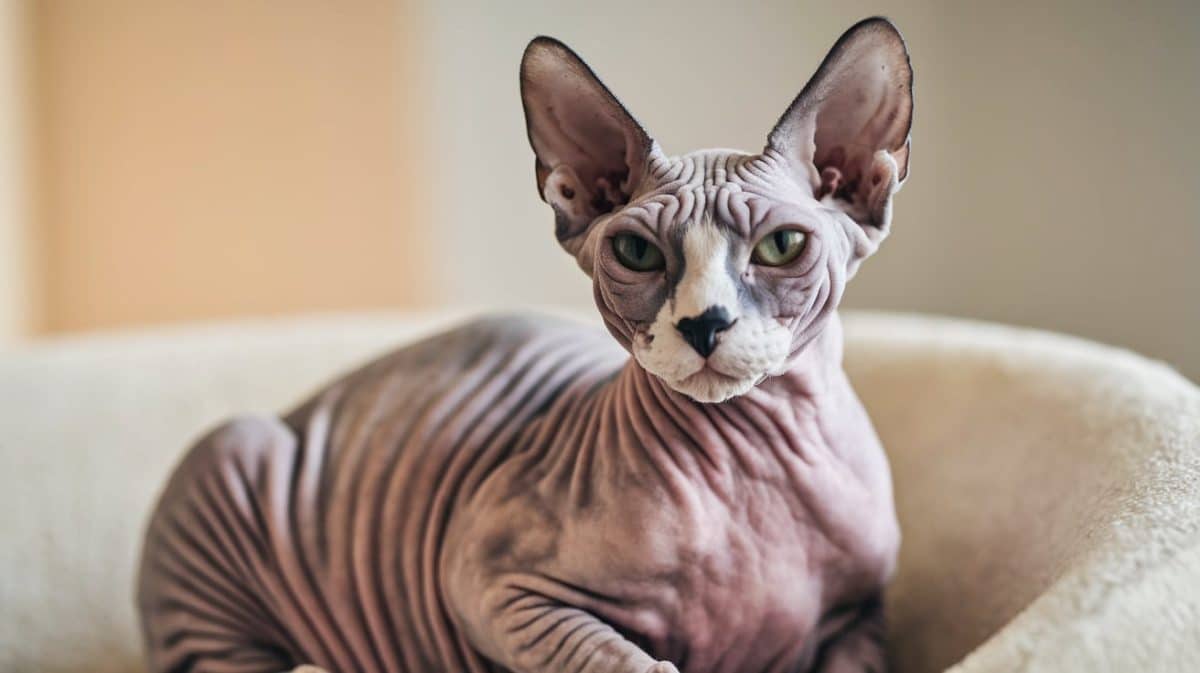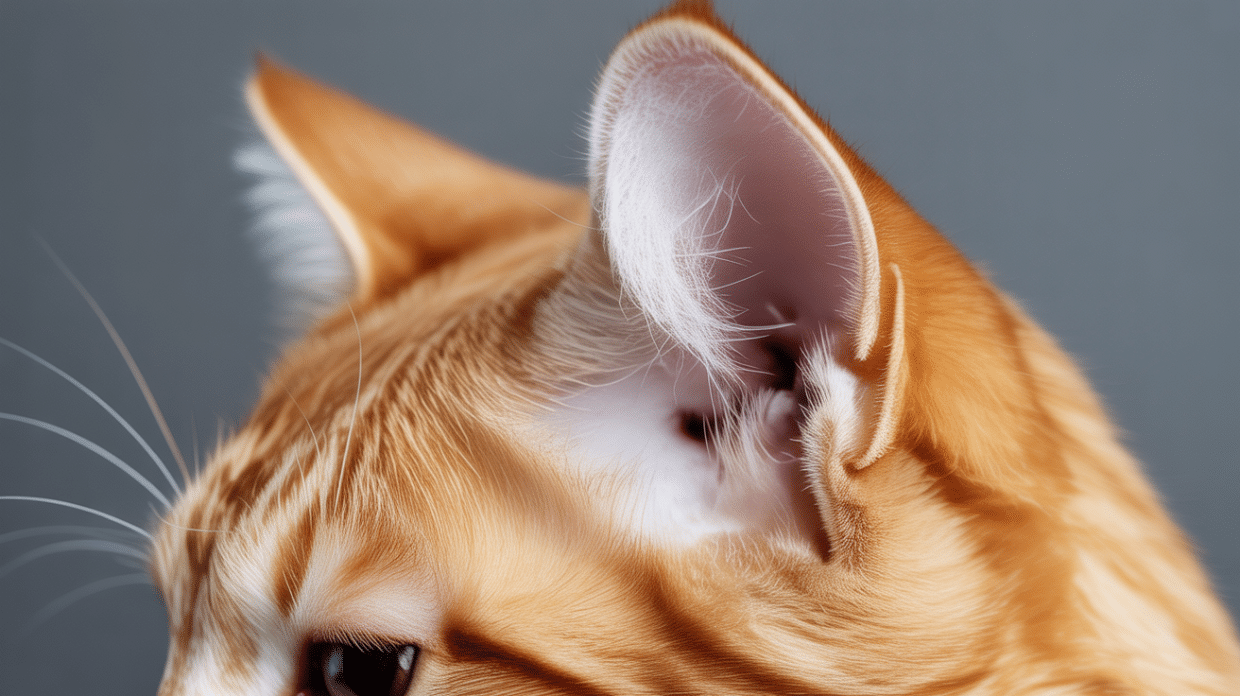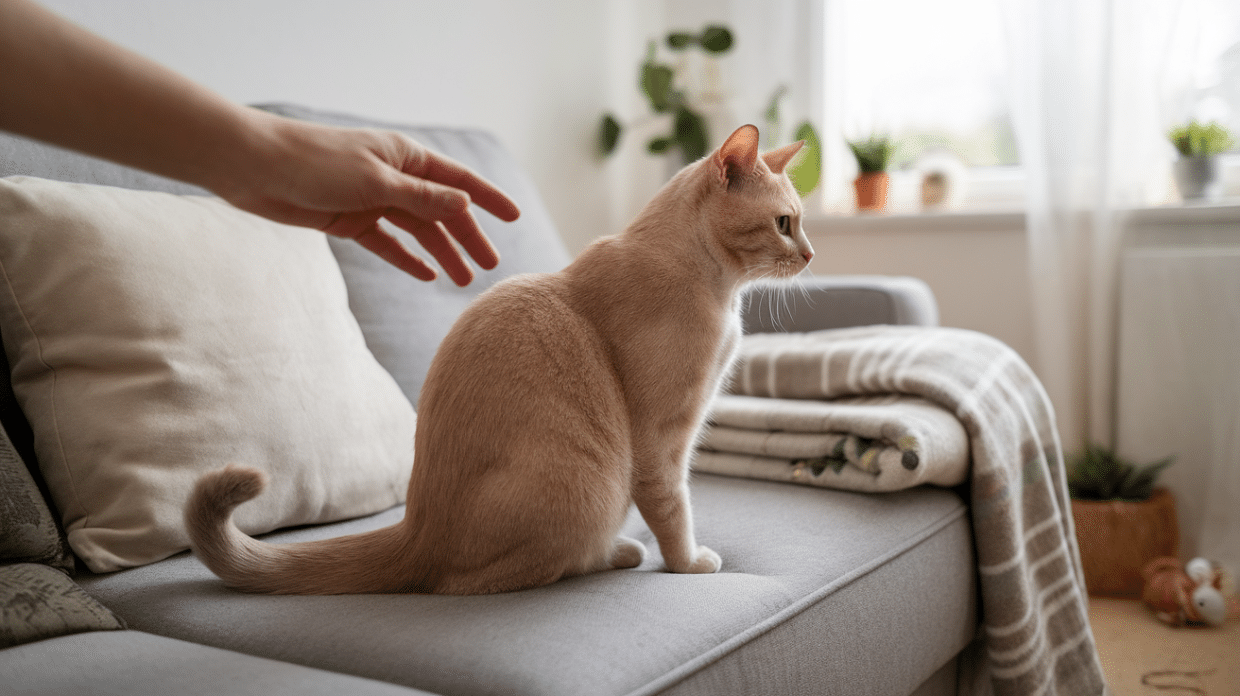Sphynx cats stand out with their almost hairless bodies, wrinkled skin, and large ears.
These cats often attract people with allergies, as many believe their lack of fur makes them a perfect choice for allergy sufferers.
However, the idea that “hairless = hypoallergenic” isn’t quite right. This common belief leads many potential cat owners down the wrong path.
While Sphynx cats have very little to no fur, they still produce the proteins that cause allergic reactions in humans.
Let’s find Sphynx cats truly offer relief for allergy sufferers or if this popular notion needs a closer look.
Sphynx Cat’s Hypoallergenic Status
Sphynx cats are often marketed as “hypoallergenic” because they lack fur.
While this hairless breed offers certain advantages for allergy sufferers, it’s important to understand the benefits and limitations before bringing one into your home.
Benefits of Sphynx Cats for Allergy Sufferers
No Fur to Trap and Spread Allergens
The most obvious advantage of Sphynx cats is their lack of fur. This distinctive characteristic provides several allergy-related benefits:
Less Allergen Spread: Without fur, allergens don’t spread as easily. Less dander becomes airborne, and skin oils are visible, making cleaning easier.
Less Environmental Contamination
The hairless nature of Sphynx cats also means:
Less Allergen Buildup: Without fur, fewer allergens settle on furniture and clothing. Cleanup is easier, and long-term allergen accumulation is reduced.
Limitations of Sphynx Cats for Allergy Sufferers
1. They Still Produce Allergens in Skin Oils
Despite their hairless appearance, Sphynx cats are not truly hypoallergenic:
- High skin oil production: Sphynx cats produce more skin oil (sebum) than many other breeds to compensate for their lack of protective fur.
- Fel d1 protein presence: They still produce the Fel d1 protein in their skin glands and saliva, which is the primary trigger for allergic reactions.
- Direct contact reactions: Touching a Sphynx cat can still trigger allergies since the allergens are on the skin’s surface.
2. More Frequent Bathing Required
Owning a Sphynx cat comes with unique maintenance requirements:
- Regular bathing needs: Sphynx cats typically require weekly baths to remove excess oils normally absorbed by fur in other breeds.
- Special cleaning requirements: Their skin folds need careful cleaning to prevent the buildup of oils and allergens.
- Additional commitment: This high-maintenance aspect can be challenging for busy pet owners and adds another dimension to allergy management.
3. Individual Reactions Vary Widely
Perhaps most importantly, allergic reactions to Sphynx cats are highly individualized:
- Varied Sensitivity: Some react to dander, others to saliva or skin oils.
- Symptom Range: Reactions vary from mild sneezing to severe asthma.
- Possible Adaptation: Some build tolerance, while others worsen over time.
- Unpredictable Response: Only direct exposure can determine individual reactions.
Caring for a Sphynx Cat to Minimize Allergens
Owning a Sphynx cat with allergies requires consistent care to minimize allergen exposure.
The good news is that many allergy sufferers can successfully live with these unique cats with proper maintenance.
Regular Bathing Routines
Sphynx cats need more frequent bathing than other breeds to manage the oils their skin produces:
- Bathe Weekly: Removes oils and allergens.
- Use Gentle Shampoo: Avoid harsh or scented products.
- Clean Skin Folds: Focus on the neck, armpits, and toes.
- Check Ears & Nails: Clean weekly to remove buildup.
- Dry Thoroughly: Use a microfiber cloth to prevent moisture issues.
Cleaning Their Bedding and Favorite Spots
Since Sphynx cats transfer oils to surfaces they contact, regular cleaning of their environment is crucial:
- Wash Bedding Weekly: Use machine-washable covers and hot water.
- Use Washable Blankets: Place them in favorite spots for easy cleaning.
- Clean Scratching Posts: Replace or wash regularly to remove oils.
- Sun-Dry Items: Exposure to sunlight helps reduce allergens
Home Maintenance Tips for Allergy Sufferers
Beyond caring for your Sphynx, managing your home environment is essential for allergy control:
- Use HEPA Filters: Air purifiers and vacuums with HEPA filters reduce allergens.
- Opt for Hard Floors: Avoid carpets, as they trap allergens.
- Keep Bedroom Cat-Free: Create an allergen-free sleeping space.
- Wash Hands & Clothes: Clean up after handling your Sphynx.
- Deep Clean Regularly: Periodic professional cleaning helps manage allergens.
Understanding Cat Allergies
Cat allergies affect millions, often due to misconceptions about their cause. The real culprit is Fel d1, a protein found in a cat’s skin and saliva—not its fur.
Fel d1: The Main Allergen
- Produced in sebaceous and salivary glands.
- All cats produce it, but males (especially unneutered) release more.
- It lingers in the air and clings to surfaces for months.
Where Allergens Are Found
- Skin oils & saliva: Spread through grooming.
- Dander & urine: Contain allergenic proteins.
- Fur: Not the allergen, but spreads it around.
Personal Considerations Before Adopting
Before bringing a Sphynx cat into your home, allergy sufferers should take several important steps to ensure compatibility and prepare for this unique pet.
Spend Time with Sphynx Cats
Visit at least 2-3 times before deciding. Start with short visits and increase duration. Test physical contact and monitor for delayed allergic reactions.
Consult an Allergist
Get allergy testing to assess sensitivity. Discuss medications or immunotherapy options. Plan allergy management before adoption.
Try a Trial Period
Some breeders and shelters offer foster-to-adopt programs. Live with a Sphynx for 2-4 weeks to test compatibility. Prepare cleaning routines and have an exit plan if needed.
Taking these steps can significantly increase your chances of successful adoption and help prevent the heartbreak of having to rehome a pet due to allergies.
Remember that each person’s allergic response is unique; what works for someone else may not work for you.
Comparison with Other Low-Allergen Breeds
If a Sphynx doesn’t seem the right fit, several other cat breeds might work better for your specific allergies and lifestyle needs.
| Breed | Allergen Levels | Maintenance | Temperament | Allergy Benefit |
|---|---|---|---|---|
| Siberian | Lower Fel d1 despite thick fur | Regular brushing, less bathing | Friendly, playful, family-friendly | Better for Fel d1-sensitive individuals |
| Balinese | Produces less Fel d1 | Regular brushing, silky coat | Vocal, affectionate, intelligent | Good for moderate allergies |
| Russian Blue | Lower Fel d1, dense coat traps allergens | Low shedding, minimal grooming | Reserved, gentle, loyal | Minimizes allergen spread |
| Devon Rex | Normal Fel d1, minimal shedding | Short, curly coat, little grooming | Playful, mischievous, social | Less fur to distribute allergens |
| Bengal | Normal Fel d1, low shedding | Short, fine coat, minimal grooming | Highly active, athletic, intelligent | Pelt-like coat traps less dander |
Factors Affecting Allergen Levels in Cats
Biological Allergen Production: Some breeds (e.g., Siberians) produce less Fel d1. Females and neutered males release lower levels.
Coat Characteristics: Dense coats trap allergens, short coats shed more, and curly coats (e.g., Devon Rex) hold allergens.
Grooming Habits: Less grooming means less saliva spread, while owner-assisted grooming helps remove allergens.
Individual Variation: Allergen levels vary even within the same breed, and some owners build tolerance.
Practical Considerations: Match grooming needs to your lifestyle and consider adoption trials before committing.
Remember that individual reactions vary widely, and spending time with a specific cat before adoption is the only reliable way to determine if you’ll have an allergic reaction.
Some rescues and breeders offer “trial periods” specifically for allergy sufferers to test compatibility before making a long-term commitment.
Conclusion
Sphynx cats are often labeled hypoallergenic, but the reality is more complex.
Cat allergies stem from the Fel d1 protein, found in saliva and skin oils—not fur.
Since Sphynx cats lack fur, they don’t shed allergen-coated hair around the home, reducing airborne dander.
However, they still produce Fel d1, meaning direct contact can trigger allergies.
Regular bathing, cleaning, and home maintenance can help allergy sufferers manage symptoms.
If you’re considering a Sphynx, spend time with one first to gauge your reaction. While they may be a better option for some, they aren’t guaranteed allergy-free pets.
Frequently Asked Questions
Do Sphynx Cats Produce Less Allergens Than Other Cats?
While Sphynx cats don’t shed fur, they still produce allergens in their skin oils and saliva, which can trigger allergies.
How Can I Reduce Allergens with a Sphynx Cat?
Regular bathing, cleaning their bedding, and maintaining a clean home environment can help reduce allergens.








